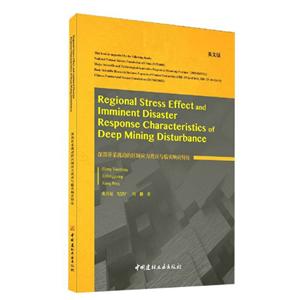
作者:王永亮
页数:336
出版社:科学出版社
出版日期:2023
ISBN:9787030748379
电子书格式:pdf/epub/txt
内容简介
本书通过水力裂缝扩展与诱导应力场演化关系,开展非均质致密储层岩体水力压裂缝网扩展与应力扰动的数值方法、模型与模拟研究,主要包括以下内容:(1)流体驱动多尺度拉伸与剪切裂缝扩展的双线性内聚力模型,(2)水力裂缝缝网动态扩展的多线程并行计算方法,(3)水力裂缝遇层理、颗粒动态交汇和偏转的非均质连续-连续计算方法,(4)含天然裂缝储层中水力裂缝的动态扩展和微地震模拟。(5)水力裂缝与天然裂缝动态扩展与交汇的敏感因素:方向、间距、长度、间隔,(6)层理性储层多条水力裂缝的非稳定扩展与应力阴影效应,(7)多井水力压裂中多条水力裂缝的非稳定扩展与剪应力扰动
目录
Chapter 1 Introduction 1
1.1 Research background and significances 1
1.2 Unstable dynamic propagation behaviours of the multistage hydrofracturing fracture network 7
1.2.1 Deflection of fractures under the initiation sequence and perforation cluster spacing and well spacing 9
1.2.2 Disturbance of the stress field in the propagation process of multiple fractures 15
1.3 Mechanisms of induced deflection of fluid-driven fractures 16
1.3.1 Stress shadow effects between multiple fractures 17
1.3.2 Controlling factors of stress shadows 21
1.4 Numerical analysis of continuous stress field and discontinuous fracture 25
1.4.1 Continuum-discontinuum numerical methods and models 26
1.4.2 Simulation of stress-dependent unstable dynamic propagation of fractures 32
1.5 Challenges and perspectives 37
1.6 Conclusions 38
References 39
Chapter 2 Dual bilinear cohesive zone model for fluid-driven propagation of multiscale tensile and shear fractures 48
2.1 Introduction 48
2.2 Governing partial differential equations for hydrofracturing 52
2.2.1 Governing equations of solid deformation 53
2.2.2 Governing equations of fluid flow in fractured porous media 55
2.3 Dual bilinear cohesive zone model 56
2.4 Numerical discretization 58
2.4.1 Finite element discretization for solid 58
2.4.2 Finite volume discretization for fluid 59
2.5 Detection and separation of discrete elements 60
2.6 Global algorithm and procedure 62
2.7 Results and discussion 63
2.7.1 Verification of fracture propagation through analytical solutions in KGD and PKN models 63
2.7.2 Laboratory scales: dynamic propagation of small-size hydraulic fractures 67
2.7.3 Engineering scales: dynamic propagation of large-size hydraulic fractures 68
2.7.4 Distribution of tensile and shear fractures in hydrofracturing process 73
2.8 Conclusions 75
References 76
Chapter 3 Multi-thread parallel computation method for dynamic propagation of hydraulic fracture networks 80
3.1 Introduction 80
3.2 Governing partial differential equations and fracture criteria for hydrofracturing 83
3.3 Multi-thread parallel computation scheme for solid and fluid analysis 83
3.4 Global algorithm and procedure 84
3.5 Results and discussion 86
3.5.1 Example 1: Verification for multi-thread parallel computation solutions of hydraulic fracture propagation 86
3.5.2 Example 2: Multi-thread parallel computation efficiency for fluid-driven fracture propagation 90
3.5.3 Example 3: Parallel computation using multi-type elements and meshes 93
3.5.4 Example 4: Dynamic propagation behaviours of fractures under in-situ stresses and external fluid drive 96
3.6 Conclusions 99
References 100
Chapter 4 Heterogeneous continuum-discontinuum computation method for dynamic diversion and penetration of hydraulic fractures contacting multi-layers and granules 105
4.1 Introduction 105
4.2 Governing partial differential equations and fracture criteria in fractured porous media 109
4.3 Combined finite element-discrete element-finite volume method and algorithm for multi-materials 110
4.4 Numerical models of tight heterogeneous reservoirs with bedding and granules 112
4.5 Results and discussions of dynamic propagation behaviours of hydraulic fractures in the multilayered reservoir 118
4.5.1 A typical example implementation of fracture propagation and pore pressure in the heterogeneous tight reservoir with beddings 118
4.5.2 Influence of bedding deviation angle and geomaterial properties on hydraulic fracture propagation 120
4.5.3 Quantitative final length and propagation states of hydrofracturing networks in heterogeneous tight reservoirs with beddings 126
4.6 Results and discussions of dynamic propagation behaviours of hydraulic fractures in embedded multi-granule reservoir 127
4.6.1 A typical example implementation of fracture propagation and pore pressure in the heterogeneous tight reservoir with granules 127
4.6.2 Influence of granule distribution and geomaterial properties on hydraulic fracture 129
4.6.3 Quantitative final length and propagation states of hydrofracturing networks in heterogeneous tight reservoirs with granules 132
4.7 Conclusions 134
References 135
Chapter 5 Dynamic propagation and intersection of hydraulic fractures and pre-existing natural fractures involving the sensitivity factors 139
5.1 Introduction 139
5.2 Combined finite element-discrete element method for hydrofracturing in fractured reservoirs 142
5.2.1 Geomechanical equations in hydrofracturing and gas production 142
5.2.2 Leak-off of fracturing fluid 144
5.2.3 Discrete fracture network model 144
5.2.4 Numerical discretization 145
5.3 Numerical models of fractured reservoir embedded discrete fracture networks 146
5.3.2 Cases study for typical pre-existing natural fractures 147
5.4 Results and discussion 151
5.4.1 Sensitivity factors of pre-existing natural fractures 151
5.4.2 Quantitative length and volume of fracture networks 155
5.4.3 Gas production in enhanced permeability fractured reservoirs 160
5.5 Conclusions 165
References 166
Cha















